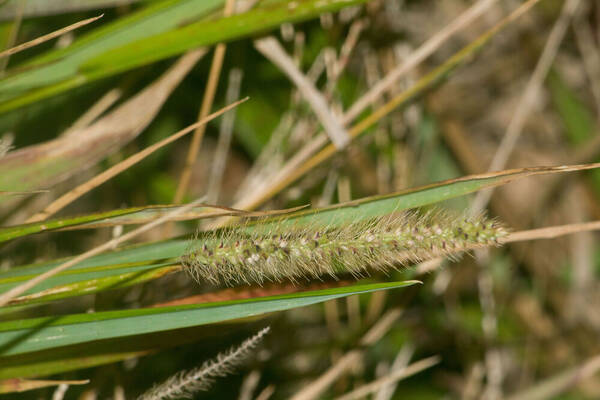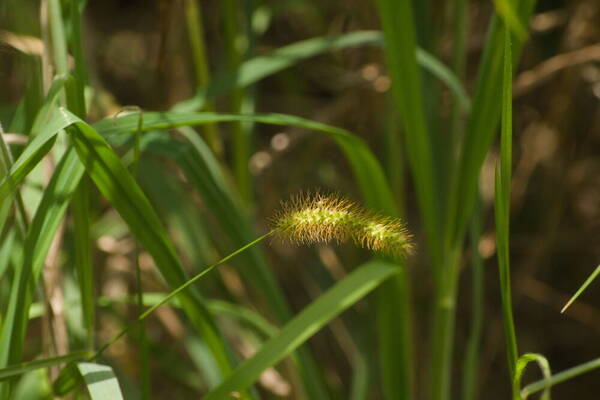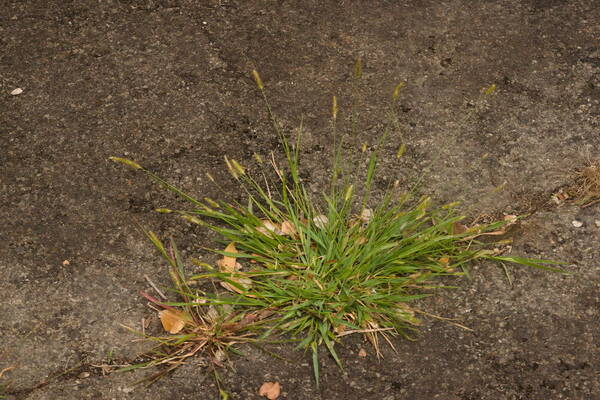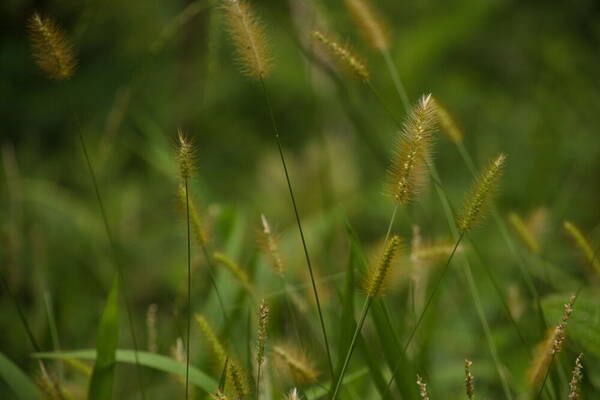Info
Subfamily: Panicoideae
Genus etymology: Setaria = "bearing bristles" [Latin] refering to the bristles of the inflorescence
Species etymology: parviflora = "small flowered" [Latin] the flowers are not especially small however
Photosynthetic type: C4 (warm season)
Nativity: naturalized - accidental
First recorded in Hawaiʻi: 1851
Legal status: USDA - noxious weed
Map


Inflorescence






Plant


Habit


Spikelets





Description
Plants perennial; rhizomatous, rhizomes short, knotty. Culms 30-120 cm; nodes glabrous. Sheaths glabrous; ligules shorter than 1 mm, of hairs; blades to 25 cm long, 2-8 mm wide, flat, scabrous above. Panicles 3-8 (10) cm, of uniform width throughout their length, densely spikelike; rachises scabro-hispid; bristles 4-12, 2-12 mm, antrorsely barbed, yellow to purple. Spikelets 2-2.8 mm, elliptical and turgid. Lower glumes about 1/3 as long as the spikelets, 3-veined; upper glumes 1/2 - 2/3 as long as the spikelets, 5-veined; lower florets often staminate; lower lemmas occasionally indurate and faintly transversely rugose; lower paleas equaling the lower lemmas; upper lemmas distinctly transversely rugose, often purple-tipped. 2n = 36, 72.
(Description source: Barkworth, M.E., Capels, K.M., Long, S. & Piep, M.B. (eds.) 2003. Flora of North America, north of Mexico. Volume 25. Magnoliophyta: Commelinidae (in part): Poaceae, Part 2. Oxford University Press, New York. 783 pp http://floranorthamerica.org/Setaria_parviflora )
Perennials with a hard, knotty caudex or with short rhizomes; culms tufted, erect or sometimes decumbent and even rooting at lower nodes, 3-12 dm long, up to 2 mm in diameter, hollow, glabrous, branching from lower and middle nodes. Sheaths compressed, keeled, glabrous, the margins scarious; ligule ciliate, less than 1 mm long; blades flat, up to 25 cm long, 2-10 mm wide, upper surface glabrous or with a few long hairs near base. Panicles dense, spikelike, 1-8 cm long, up to 2.5 cm in diameter (including the yellow or bronze-colored bristles), the primary branches up to 0.5 cm long, the bristles subtending the spikelet 4- 12, antrorsely scabrous, 2-15 mm long, rachis puberulent; spikelets green or purple-tinged, 1(2) per primary branch, ellipsoid, 2-2.8 mm long; first glume deltate, 0.8-1 mm long, 3-4-nerved, second glume 1.1-1.4 mm long, much shorter than second lemma, 5-nerved; first lemma herbaceous to somewhat coriaceous, as long as the spikelet, 5-7-nerved, midnerve sometimes grooved, apex apiculate; first palea ovate, hyaline, 2-nerved, apex acute; second lemma often purple, rigid, ovate, strongly convex, transversely rugose, apex acute; second palea equal, rugose, concave, keels prominent, enclosing base of the caryopsis. Caryopsis whitish, ellipsoid. [2 = 36, 72.]
(Description source: O’Connor, P.J. 1990. Poaceae, pp. 1481–1604. In: Wagner W.L., Herbst D.R. & Sohmer S.H. (eds.)., Manual of the flowering plant of Hawaiʻi. Vol. 2. University of Hawaii Press & Bishop Museum Press, Honolulu )